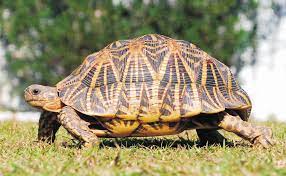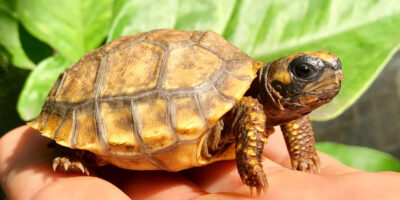The shell of a turtle is one of its most defining and essential features, offering protection and contributing to its survival in various environments. The robust, bony structure of the shell shields the turtle from predators and harsh environmental conditions. However, this raises an intriguing question: do turtle shells grow back?
Understanding the dynamics of shell regeneration is crucial for comprehending the resilience and adaptability of these fascinating reptiles. The ability of a turtle’s shell to repair itself can have significant implications for its longevity and overall well-being, highlighting the importance of this unique adaptation in the natural world.
Importance of the shell for protection and survival

The turtle shell is a remarkable evolutionary adaptation that plays a crucial role in the protection and survival of these reptiles. Composed of two main parts—the carapace (upper shell) and the plastron (lower shell)—the shell is made of bone and covered by a layer of scutes, which are plates of keratin, the same material found in human fingernails. This robust structure serves several vital functions:
Protection from Predators
The primary role of the shell is to provide a formidable defense against predators. Its hard, dome-shaped carapace is difficult for most predators to penetrate, and when threatened, many turtles can retract their heads, legs, and tails inside their shells, making them less accessible to attackers. This protective barrier significantly increases their chances of survival in the wild.
Environmental Shield
The shell also offers protection from environmental hazards. It acts as a shield against harsh weather conditions, such as extreme temperatures and abrasive elements. For aquatic turtles, the streamlined shape of the shell aids in swimming, allowing them to navigate through water with ease while also providing buoyancy.
Structural Support
Beyond protection, the shell provides structural support for the turtle’s body. It houses the spine and ribs, which are fused to the shell, offering a rigid framework that supports the turtle’s internal organs. This integration of the skeleton into the shell structure is unique among vertebrates and contributes to the turtle’s overall durability.
Importance in Behavioral Adaptations
The shell also plays a role in various behavioral adaptations. For instance, the coloration and pattern of the shell can provide camouflage, helping turtles blend into their surroundings to avoid detection by predators. In some species, the shell can even be used in displays during mating rituals or territorial disputes.
Implications of Shell Damage
Given its critical importance, damage to a turtle’s shell can be life-threatening. This brings us back to the intriguing question: do turtle shells grow back? While the shell cannot regenerate in the same way that some animals can regrow limbs, turtles do have a remarkable capacity for healing. Minor cracks and chips can often repair themselves over time, with the keratin layer regenerating to cover the damaged area. However, severe damage may require human intervention and extended care to ensure proper healing and recovery.
Understanding the importance of the shell for protection and survival underscores why the question of shell regeneration is so significant. The resilience of the shell, combined with its critical functions, highlights the remarkable adaptability of turtles in their natural habitats.
Structure of a turtle shell

The structure of a turtle shell is a marvel of natural engineering, evolved over millions of years to provide protection, support, and functionality for these ancient reptiles. Here’s a detailed look at the components and organization of a typical turtle shell:
Components of the Shell
- Carapace (Dorsal Shell):
- The carapace is the upper part of the shell that covers the turtle’s back.
- It consists of bony plates called osteoderms, which are covered by a layer of keratinous scutes.
- The scutes are similar in composition to human fingernails and vary in size and arrangement among species.
- These plates and scutes provide a tough, protective outer layer that shields the turtle from predators and environmental hazards.
- Plastron (Ventral Shell):
- The plastron is the flat, often slightly flexible lower part of the shell that covers the turtle’s belly.
- It consists of several bones that are fused together, offering protection for the turtle’s underside.
- The plastron typically has fewer scutes compared to the carapace and may have a hinge or openings in some species to aid in flexibility and movement.
Structure and Function
- Integration with Skeleton: The shell is not just an external armor; it is integrated with the turtle’s skeleton. The ribs and vertebrae are fused to the shell, providing structural support and rigidity.
- Mobility and Flexibility: Despite its protective nature, the shell allows for some degree of movement. Turtles can retract their heads, limbs, and tails into the shell for protection, utilizing specialized muscles and ligaments.
- Size and Shape Variations: The shape and size of the shell vary greatly among turtle species and are influenced by factors such as habitat, diet, and evolutionary history. Aquatic turtles typically have more streamlined shells for efficient swimming, while terrestrial species may have domed shells for protection against predators.
Development and Growth
- Embryonic Development: Turtles develop their shells embryonically. The carapace and plastron begin as separate structures and gradually fuse during development.
- Growth: Unlike mammals and birds, turtles do not have the ability to shed or molt their shells as they grow. Instead, the shell grows continuously throughout the turtle’s life through the addition of new layers of bone and keratinous scutes at the edges.
Adaptations and Specializations
- Camouflage: The coloration and patterning of the shell often provide camouflage, helping turtles blend into their environment and avoid detection by predators.
- Species-specific Features: Different turtle species may have unique adaptations in shell structure. For example, softshell turtles (family Trionychidae) have a leathery, flexible shell adapted for swimming and burrowing in soft substrates.
Function of the Turtle Shell
The turtle shell serves several important functions that are crucial for the survival and well-being of these remarkable reptiles. Here are the primary functions of the turtle shell:
1. Protection from Predators and Environmental Hazards
The most obvious function of the turtle shell is its role as a protective armor. The shell provides a tough, rigid exterior that shields the turtle’s body from predators, such as carnivorous mammals, birds of prey, and other predators in their respective habitats. The shell’s structure, composed of bony plates (osteoderms) covered by keratinous scutes, makes it difficult for predators to injure or penetrate the turtle’s vulnerable body parts.
2. Structural Support and Integration with the Skeleton
Beyond protection, the shell serves as an integral part of the turtle’s skeleton. The ribs and vertebrae are fused to the shell, providing structural support and rigidity to the entire body. This integration helps in supporting the internal organs and maintaining the turtle’s overall shape and posture.
3. Buoyancy and Aquatic Adaptation
For aquatic turtles, the shell plays a crucial role in buoyancy and swimming. The streamlined shape of the shell allows aquatic turtles to move efficiently through water. Additionally, the ability to adjust their position within the water column helps them regulate their buoyancy, allowing for efficient swimming and diving behaviors.
4. Thermoregulation
The shell also contributes to thermoregulation in turtles. Depending on the species, the shell’s coloration and thickness can influence how much heat is absorbed or reflected. Turtles can bask in the sun to raise their body temperature or retreat into shaded areas to cool down, using their shells as a passive thermal regulator.
5. Camouflage and Behavioral Adaptations
The coloration and patterning of the shell can provide camouflage, allowing turtles to blend into their surroundings and avoid detection by predators. Some species have shells that mimic the colors and patterns of their habitat, providing effective camouflage and enhancing their survival.
6. Storage of Fat and Minerals
In some turtle species, particularly those that experience seasonal changes or periods of food scarcity, the shell can store fat reserves. Additionally, certain minerals, such as calcium, are stored in the shell, contributing to the turtle’s overall health and development.
7. Communication and Species Recognition
The shell may also play a role in communication and species recognition among turtles. Some species exhibit unique patterns or markings on their shells that can help identify individuals or signal information to conspecifics during social interactions, mating rituals, or territorial displays.
Causes of Shell Damage
Shell damage in turtles can occur due to various factors, ranging from natural occurrences to human-induced threats. Here are some common causes of shell damage in turtles:
1. Predation
Predation is a significant natural cause of shell damage in turtles. Predators such as carnivorous mammals (e.g., raccoons, foxes), birds of prey, large fish, and other turtles may attempt to break or puncture the shell to access the turtle’s soft tissues. These attacks can result in cracks, chips, or even extensive fractures in the shell, compromising the turtle’s protection and survival.
2. Accidental Trauma
Turtles can sustain shell damage from accidental trauma, such as collisions with vehicles, boats, or other objects in their environment. Blunt force impacts can cause fractures, breaks, or abrasions to the shell, especially in terrestrial species or those living in human-modified habitats where encounters with vehicles are more likely.
3. Habitat Hazards
Natural elements and environmental hazards can also contribute to shell damage. Abrasion from rough terrain or abrasive substrates can wear down the outer scutes of the shell over time. Harsh weather conditions, such as hailstorms or falling branches, can also cause physical damage to the shell.
4. Disease and Infections
Certain diseases and infections can weaken the shell structure or cause lesions that compromise its integrity. Fungal infections, bacterial infections, or parasitic infestations can lead to shell rot, characterized by softening of the shell and deterioration of the keratinous scutes. These conditions can be exacerbated by poor water quality or inadequate environmental conditions.
5. Human Activities
Human activities can pose significant threats to turtle shells. Habitat destruction, pollution, and habitat fragmentation can impact turtle populations directly and indirectly. Chemical pollutants in water bodies can weaken shell integrity over time. Illegal collection or poaching of turtles for the pet trade can also lead to injuries or shell damage during capture, transport, or confinement.
6. Nutritional Deficiencies
Poor nutrition or inadequate dietary intake can affect shell health and growth in turtles. Calcium and vitamin deficiencies, essential for shell development and maintenance, can result in soft or brittle shells that are more susceptible to damage from minor trauma or environmental stressors.
7. Improper Handling or Care
Improper handling by humans, such as mishandling during capture, transportation, or captivity, can lead to shell injuries. Rough handling, dropping, or improper enclosure conditions (e.g., sharp edges in captivity) can cause fractures or abrasions to the shell.
Do turtle shells grow back?

Healing Process of a Damaged Shell
The healing process of a damaged turtle shell is a fascinating example of natural adaptation and resilience. While turtle shells cannot regenerate like some other tissues, they do have mechanisms for repair and healing, especially for minor injuries. Here’s how the healing process typically unfolds:
1. Initial Response to Injury:
- When a turtle’s shell is damaged, whether from a predator, accident, or other causes, the initial response involves physiological reactions to minimize further damage and begin the healing process.
- Turtles may retract into their shell to protect the injured area and reduce exposure to predators or environmental hazards.
2. Natural Healing Mechanisms:
- Keratinous Scutes: Turtles have a layer of keratinous scutes covering their shell. These scutes are similar in composition to human fingernails and serve as a protective barrier. Minor injuries to the scutes, such as scratches or small cracks, can heal over time as new layers of keratin are produced. This process helps to maintain the shell’s integrity and protection.
- Epidermal Repair: The turtle’s skin (epidermis) plays a role in shell healing as well. Cells in the epidermis can contribute to the repair of minor injuries by producing new keratinous material to cover damaged areas.
3. Long-term Healing and Adaptation:
- For more significant injuries, such as fractures or larger shell damage, the healing process may require longer periods and sometimes veterinary intervention.
- Natural Sloughing and Replacement: Turtles naturally shed and replace their scutes over time. This process can gradually remove damaged or worn-out scutes, allowing new ones to form underneath. It helps in maintaining the shell’s protective function and appearance.
4. Veterinary Care:
- In cases of severe shell damage, veterinary care is essential. Veterinarians may clean and disinfect wounds, stabilize fractures, and provide supportive care to promote healing.
- Shell Repair Techniques: Advanced shell repair techniques may be used in veterinary medicine, such as applying epoxy or other materials to stabilize fractures or reconstruct damaged areas. These interventions are crucial for ensuring the turtle’s long-term survival and well-being.
5. Recovery and Rehabilitation:
- After initial treatment, turtles often require a period of rest and rehabilitation to allow the healing process to progress. Careful monitoring ensures that the shell heals properly without complications.
- Rehabilitation may involve providing appropriate habitat conditions, nutritional support, and protection from further injury until the turtle’s shell is fully healed.
Conclusion
This page answers the question on do turtle shells grow back. Turtle shells do not have the capability to regenerate once damaged or lost. While turtles possess natural healing mechanisms for minor injuries to their shells, significant damage may require veterinary intervention to ensure proper healing and the preservation of their vital protective structures.
Understanding the limits of shell repair underscores the importance of proactive conservation measures to safeguard these resilient reptiles and their habitats.

